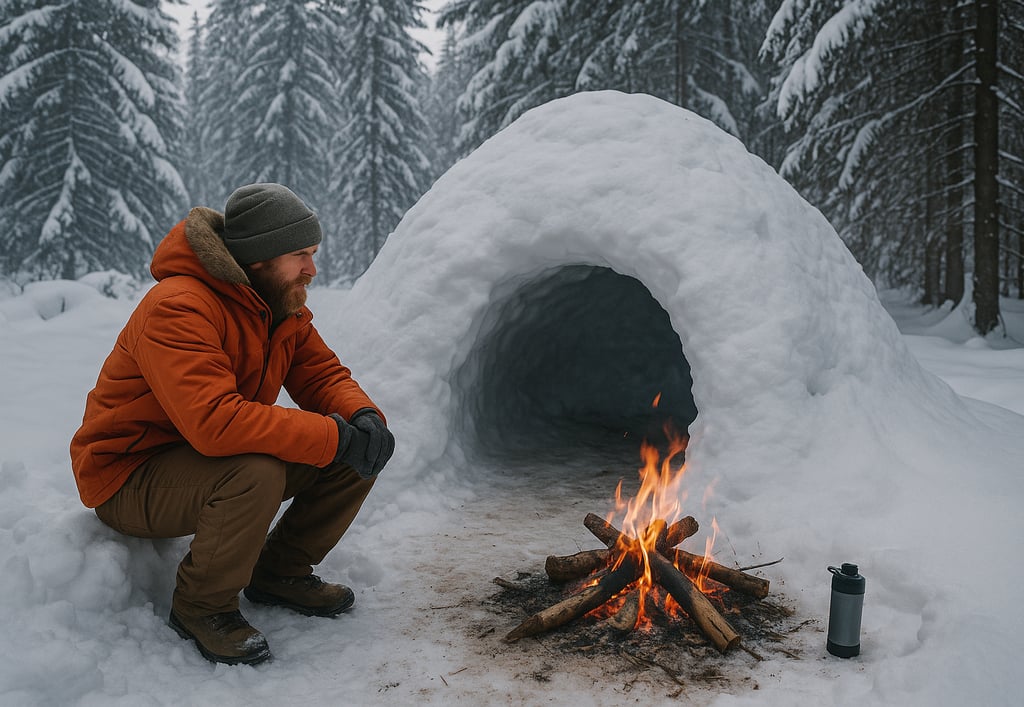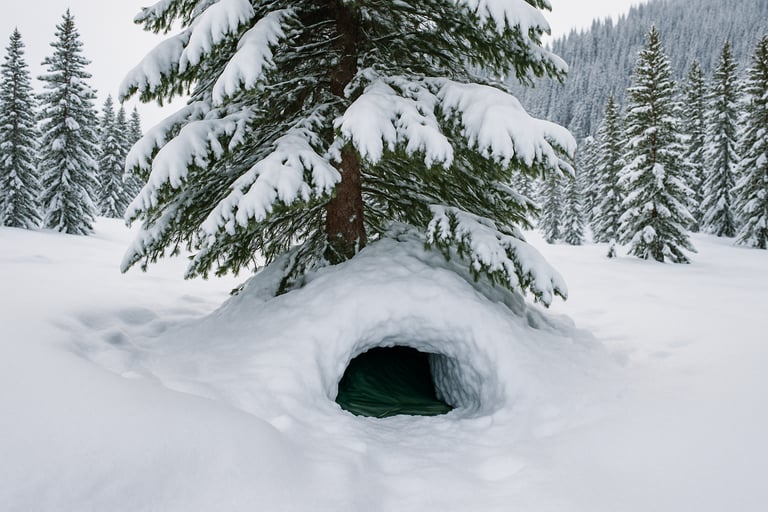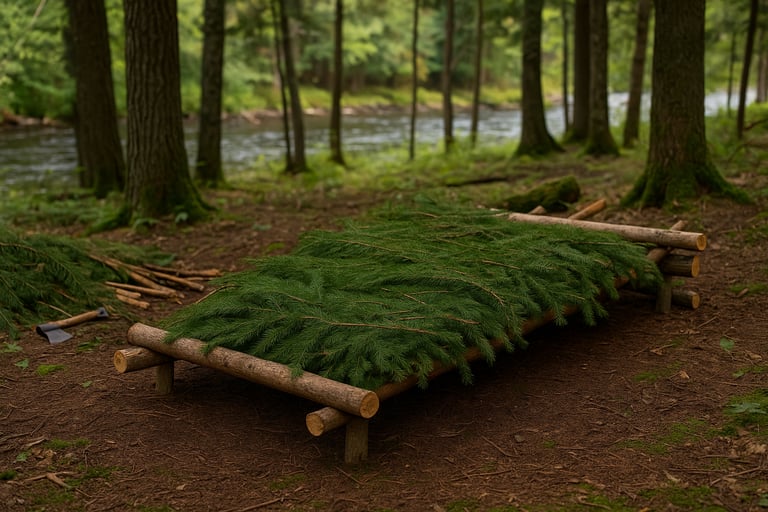Winter Shelter Hacks: Stay Warm & Safe in Freezing Wilderness Conditions
Learn how to keep warm in freezing temperatures with smart winter shelter hacks. Discover practical cold weather survival strategies, heat retention tips, and insulation tricks for the wilderness.


Winter Shelter Hacks: Stay Warm & Safe in Freezing Wilderness Conditions
Why Staying Warm Is About More Than Just Comfort
When temperatures plummet, especially in remote areas, staying warm becomes a matter of survival. Exposure to cold can lead to hypothermia, frostbite, and poor decision making. But with the right winter shelter setup and a few practical hacks, you can dramatically increase your chances of staying safe, even in freezing weather.
Creating or improving a shelter in cold conditions isn’t just about blocking wind or snow. It’s about trapping heat, conserving energy, and protecting yourself from the ground up. Whether you're caught unexpectedly in a winter storm or planning a snow trek, having these strategies in your toolkit can make all the difference.
Insulate Yourself from the Ground First
In freezing conditions, the cold ground will drain body heat faster than the surrounding air. That’s why one of the first things to focus on is creating a thick barrier between you and the earth. Natural materials like pine boughs, dry leaves, and even your backpack can help build an insulating bed. If you have a sleeping pad or foam mat, double it up or add an emergency blanket underneath to reflect body heat back toward you.
Even in a well-built shelter, failing to insulate beneath you will lead to rapid heat loss overnight. Think of your shelter like a thermos — insulation below is just as important as the walls and roof.
One shelter especially suited for cold weather is the tree pit shelter, which naturally insulates from both wind and ground chill using the landscape.
Use Snow to Your Advantage
While it might seem counterintuitive, snow can be an excellent insulator. Building a snow trench, snow cave, or even snow walls around your tarp or tent can shield you from wind and help trap warmth. The trick is to use packed snow, not loose powder, and to ventilate small shelters to avoid carbon monoxide buildup.
If building with snow, avoid placing your shelter in avalanche-prone zones or directly beneath heavy tree branches. Even small shifts can create dangerous situations. Snow shelters take effort but can offer superior protection in deep winter conditions when time and energy allow.
Knowing how to prevent and treat cold weather injuries like hypothermia can be life-saving in these conditions.
Trap and Reflect Your Body Heat
Your body is the best source of warmth in a survival shelter, so your goal is to trap and reflect that heat. If you have a mylar blanket or reflective material, hang it inside the shelter or drape it along the ceiling to bounce heat back down. Wrapping it around you as an inner liner, combined with dry clothing and a windproof outer layer, can make a big difference.
Adding a candle lantern (only if it’s safe and ventilated) can slightly warm small shelters, though never rely on fire alone. Always prioritize keeping heat in, not just creating it.
To boost thermal efficiency, some people combine this with a bough bed shelter, which provides both insulation and structure using layered evergreen branches.
Block Wind and Minimize Exposure
Wind chill can turn an already freezing night into a brutal one. Use any materials available — tarps, branches, snow blocks, or even your backpack — to block prevailing winds. Keep your shelter entrance facing away from the wind and close off as much open space as possible.
Try to minimize movement and exposure once you’re inside your insulated area. Every time you leave or shift too much, warm air escapes and cold air rushes in. Bundle up before sleeping and keep essentials like gloves and fire-starting gear close at hand so you don’t need to leave your shelter in the dark.
Use Your Gear Strategically
Everything you carry can play a role in winter shelter survival. Empty stuff sacks can be filled with leaves for insulation, sleeping bags can be doubled up with bivy sacks, and dry clothing should be layered strategically — tight to your body but not so tight it restricts circulation.
If you have water bottles, fill them with warm (not boiling) water before sleep and tuck them inside your sleeping system to generate heat. Just make sure they’re leak-proof. Little hacks like these can keep your core temperature safe through the night.
Planning ahead with the right winter survival clothing will also help your gear work with you, not against you.
Stay Dry at All Costs
In cold environments, staying dry is more critical than staying warm. Wet clothing will chill you fast and make heat retention nearly impossible. Always strip off damp layers before bedding down and try to keep your shelter space dry and ventilated.
Even snow can cause sweat to freeze if you overexert yourself during setup. Pace yourself and work in layers you can remove easily as your body heats up. Prevention is far easier than recovery when it comes to moisture in winter survival.
Final Thoughts on Winter Shelter Safety
Freezing temperatures in the wilderness aren’t just uncomfortable, they can be deadly if you’re unprepared. But with the right knowledge, even improvised shelters can become warm, safe havens. Focus on insulation, block the wind, trap body heat, and use every bit of gear and environment to your advantage. With these winter shelter hacks, you’re not just enduring the cold — you’re surviving it smartly.




© 2025. All rights reserved About | Privacy Policy | Terms and Conditions | Affiliate Disclosure | Disclaimer


